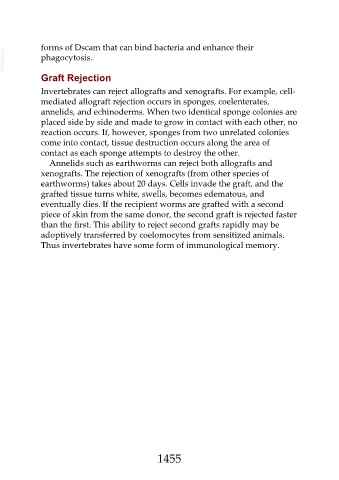Page 1455 - Veterinary Immunology, 10th Edition
P. 1455
forms of Dscam that can bind bacteria and enhance their
VetBooks.ir phagocytosis.
Graft Rejection
Invertebrates can reject allografts and xenografts. For example, cell-
mediated allograft rejection occurs in sponges, coelenterates,
annelids, and echinoderms. When two identical sponge colonies are
placed side by side and made to grow in contact with each other, no
reaction occurs. If, however, sponges from two unrelated colonies
come into contact, tissue destruction occurs along the area of
contact as each sponge attempts to destroy the other.
Annelids such as earthworms can reject both allografts and
xenografts. The rejection of xenografts (from other species of
earthworms) takes about 20 days. Cells invade the graft, and the
grafted tissue turns white, swells, becomes edematous, and
eventually dies. If the recipient worms are grafted with a second
piece of skin from the same donor, the second graft is rejected faster
than the first. This ability to reject second grafts rapidly may be
adoptively transferred by coelomocytes from sensitized animals.
Thus invertebrates have some form of immunological memory.
1455

